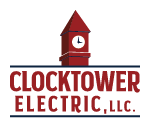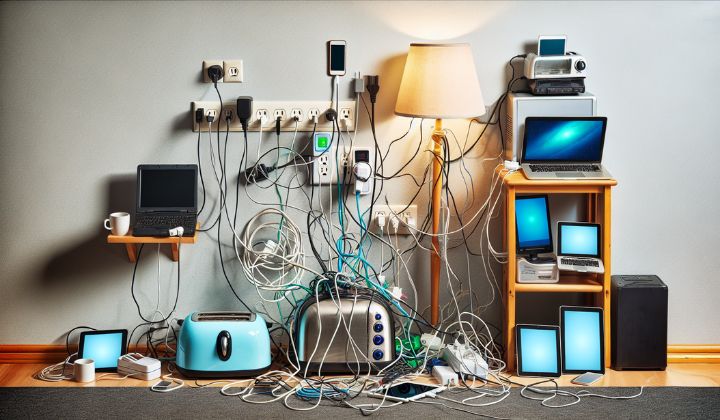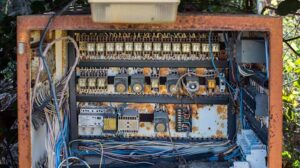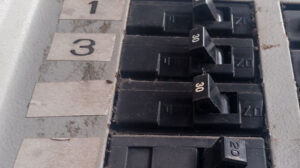It’s common to wonder how many devices can be plugged into one outlet safely. While you’re likely safe with two to three devices, the true answer hinges on their combined wattage and your outlet’s capacity.
A single outlet should ideally cater to only two to three devices, keeping total wattage within the safe usage threshold, and special caution is needed when connecting high-wattage appliances.
In this article, we uncover “how many things can I plug into one outlet” by assessing the load on your outlet and effectively using devices without risking overload or hazards, providing tools and tips for electrical safety.
Guidelines for how many devices to plug into a single outlet
With decades of experience as residential and commercial electricians, we’ll provide some best practices below for ensuring that your outlets remain safe and functional for years to come:
How many electrical items can run off one socket?
It is acceptable to connect two or three gadgets into one electrical outlet, but it’s also important to take the amperage of your circuit breaker into account beforehand (we’ll discuss more about this later in the article).
Remember the power constraints to prevent overloading the circuit and potentially tripping the breaker.
Can you have too many things plugged into an outlet?
Yes, it is possible to have too many things plugged into a single outlet. Plugging too many things into a single outlet can cause an overload on the circuit, which may result in the tripping of the breaker or even spark a fire.
This could lead to equipment damage and pose potential safety hazards. It is important not to have too many items plugged in at once as this could strain the circuit’s capacity and potentially harm your devices.
Can I plug two power strips into one outlet?
Using two power strips in a single outlet is considered safe, as long as the total amount of electricity being used does not exceed what the outlet can handle. It’s important to avoid plugging in heavy-consuming devices like heaters and air conditioners to prevent overloading and potential damage.
What are the signs of an overloaded outlet?
Watch for the following warning signs that you’ve plugged too many devices into your outlet: lights that frequently flicker or dim, a circuit breaker that trips regularly, crackling or buzzing noises coming from switches or outlets, outlets and switches that are hot to the touch, or the distinct odor of burning originating from outlets and switches.
The aforementioned symptoms are signs that you should get a professional electrician involved. Addressing these potential electrical problems promptly can avoid potential headaches at best, and serious safety hazards at worst.
Understanding your outlet’s capacity
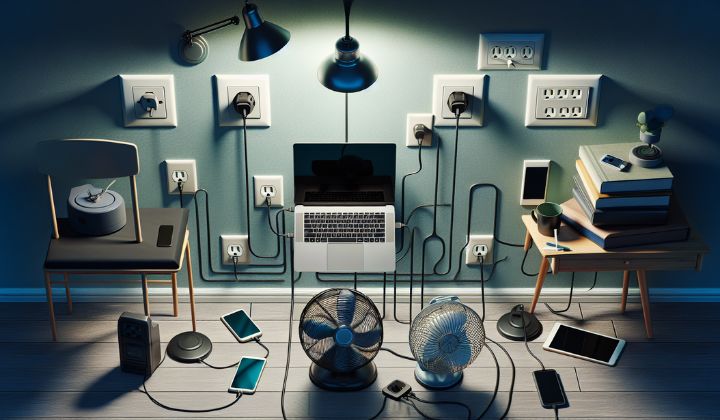
To prevent outlets from being overloaded, it is important to understand their capacity.
This refers to the maximum wattage or load that an outlet or circuit can safely handle. It’s similar to a gate which has a limit on how many people can pass through without causing danger, and this applies equally to electrical outlets.
The calculation of an outlet’s capacity involves multiplying its amperage rating by the voltage provided according to Ohm’s Law. Essentially, this helps determine the amount of power that an outlet can manage before becoming unsafe.
To fully comprehend this concept, one must consider factors such as amperage ratings, circuit breakers, and the wattage used by plugged-in devices.
Amperage ratings and circuit breakers
Understanding amperage ratings and circuit breakers is how we determine an outlet’s capacity. Amperage ratings measure the rate of current flow through an electrical circuit, which helps prevent overloading and ensures that devices do not exceed the outlet’s limit.
Typically, a home outlet is a 15-amp outlet, although 20-amp and 25-amp outlets also exist commonly. This is especially true if you’re dealing with commercial outlets instead of residential ones. If you’re unsure of the amperage ratings of your individual outlets, you can have an electrician assess the amerage of the outlet by putting an amprode on the conductor on the breaker.
Circuit breakers act as guardians for a specific circuit by using electromagnets to monitor the flow of electricity. When too much current passes through, the electromagnetic activates and interrupts the circuit to stop electric flow until it returns to safe levels.
Wattage of devices plugged in
Understanding the amperage ratings and function of circuit breakers is important, but it’s also necessary to consider the devices that we plug into outlets.
Each device contributes to the overall load on an outlet, similar to how passengers add weight in a car, too many can cause issues. This is where wattage comes into play.
Wattage measures the power output or usage of electrical devices. A higher wattage means more strain on an outlet. To calculate total wattage for a particular circuit, simply add together all individual device requirements before plugging them in.
By staying within 80% of the maximum capacity allowed by safe threshold levels, you’ll prevent overloading your outlets and causing potential hazards.
How many things can be plugged into one outlet?
After addressing the technical details, we can shift our attention to the question at hand: what is a safe number of items to plug into one outlet?
As per guidelines, it is considered safe to plug two or three devices at once into a single outlet. Keep in mind that the total wattage of all connected devices should not exceed the capacity of the outlet.
The type of devices you intend on plugging in also plays an important role. High-wattage appliances such as space heaters and toasters require more power and can easily overload an outlet if used carelessly.
Although using one power strip may seem like a convenient solution for connecting multiple gadgets through just one socket, this practice must be approached with caution.
Caveats for adding multiple devices to a single outlet
Plugging in multiple devices to one outlet is similar to adding toppings on a pizza. A couple of extra pepperoni slices? No problem. But when you overload the toppings, it becomes soggy and difficult to handle.
The same applies to electrical outlets as overloading can result in potential hazards such as an electric fire hazard. It may seem convenient to plug everything into one spot, but it’s important to distribute your devices evenly across different outlets and make sure not to exceed safe limits.
Remember that safety should be prioritized when dealing with power strips or extension cords instead of convenience at all costs.
Always keep the “less is more” concept in mind next time you consider using a single outlet for many devices as this will prevent any risk factors associated with electrical fires due to overloaded circuits, which has been proven hazardous considering materials prone to combusting have been exposed by accident leading to quick start ignition from blown fuses.
Recognizing the risks of overloading outlets
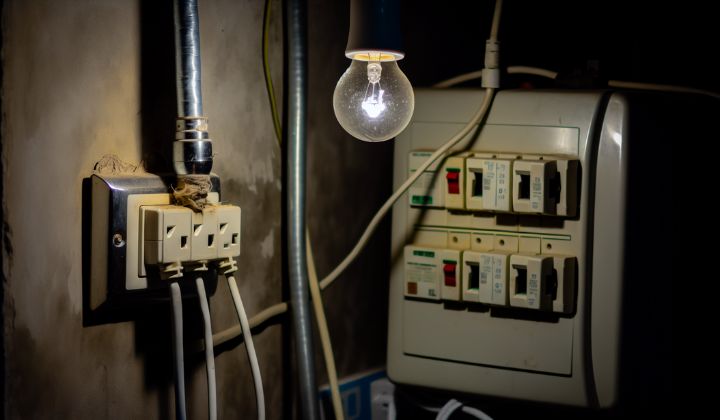
Overloading an electrical outlet may seem harmless, but it can have serious consequences. It has the potential to cause significant damage such as fires and excessive heat generation. In short, overloading outlets is a safety concern that should not be underestimated.
To prevent overload situations, understand the risks involved. Just like how doctors look for symptoms of illness in patients, there are warning signs that indicate an overloaded outlet. These signs can also signal possible harm to appliances and wiring connected to these outlets.
Warning signs of overloaded outlets
Sometimes, you’ll get indications of trouble long before the outlet stops working. Identifying signs of an overloaded outlet is important to prevent potential hazards. Some indications are obvious, such as repeatedly tripped circuit breakers. Others may be subtle, like flickering or dimming lights.
Some clear red flags should never be ignored, including a burning smell or smoke emanating from an outlet or appliance.
If any of these warning signals present themselves in your home’s electrical system, take immediate action:
- Lights that frequently flicker or dim
- Circuit breaker trips regularly
- Buzzing or crackling noises coming from outlets and switches
- Outlets and switches that are smoking or are warm to the touch
- The distinct odor of burning originating from outlets and switches
To reduce strain on the overloaded outlet(s), unplug devices immediately. This will also lessen the chances of future hazardous situations.
Hesitating could lead to serious consequences such as starting an electric fire. Being unaware often results in more harm than good, demand help right away if needed!
Potential damage to appliances and wiring
Overloaded outlets have the potential to cause various forms of damage, such as electrical fires and overheating of circuit wiring. This can also lead to loose connections and reduced performance in appliances. Overloading can result in significant harm to both your devices and overall wiring.
Overloaded outlets may cause faulty or damaged wiring, which could potentially pose a fire hazard due to increased heat production. Signs indicating this type of damage include flickering lights, tripped breakers, burned outlets, and power outages. In case any warning signs are observed, it is advisable to seek professional assistance from an electrician for proper assessment.
Smart usage of power strips and extension cords

Power strips and extension cords are convenient tools for connecting multiple devices, but it’s important to use them carefully. Just like a strong spice, using a small amount can enhance your dish, but too much can ruin the flavor. The same principle applies when using power strips and extension cords.
Properly utilizing these devices prevents outlet overload and ensures safe usage. In this article, we will discuss how to choose the right power strip and follow safety precautions when plugging in with an extension cord.
Choosing the right power strip
Power strips are useful for providing multiple outlets from a single power source, but not all of them offer the same level of protection. It is important to choose one with a built-in circuit and surge protection to ensure the safety of your connected devices.
This will prevent electrical overloads and shortages, as well as absorb excess voltage from power surges that could potentially damage your electronic equipment. Investing in a high-quality power strip will maintain the longevity and security of your devices.
Extension cord safety tips
Similar to power strips, extension cords can be a convenient solution for powering multiple devices.
When opting for an extension cord, make sure to select one with the appropriate rating suitable for your devices. It’s important not to use them as permanent solutions and store them properly after use. Adhering to these safety measures will ensure efficient and safe utilization of extension cords.
Strategies for preventing outlet overload
With knowledge of the potential hazards and indicators of outlet overload, we can now focus on ways to prevent it. By distributing devices among multiple outlets and potentially upgrading your home’s electrical system, you can effectively manage electricity usage and avoid overloading.
These prevention methods not only protect against overloading, but also promote energy efficiency while providing peace of mind. Let us examine these strategies in more detail to understand how they contribute to the safe and efficient use of your electrical outlets.
Spread devices across multiple outlets
One effective way to prevent outlet overload is by distributing devices among multiple outlets. Instead of plugging everything into the same outlet, it’s important to evenly spread out the electrical load across different outlets.
By avoiding overloading a single outlet, you can avoid potential hazards and safely utilize all available outlets for your electronic equipment.
Upgrading your home’s electrical system
If your residence is older or you have multiple electrical devices, it may be necessary to upgrade the electrical system. This will allow for modern device usage and avoid overloading problems.
This process typically involves updating the main panel, replacing outdated wiring, and adding more circuits. Although it might seem costly at first glance, it’s often worth it in the long run.
When to call a professional electrician
Despite our best efforts, there may be times when the assistance of a professional electrician is necessary. If you observe indications of outlet overloading such as frequent tripping of breakers or lights flickering, seek the expertise of an electrician for a thorough evaluation.
A qualified electrician can evaluate your home’s electrical system and identify any potential problems before providing recommendations on how to prevent outlet overload.
Signs that you need professional help
Continual trips in your circuit breaker, lights flickering frequently, and damaged appliances are all indications that you should contact a licensed electrician.
In case any of these signs appear, we advise that you do not attempt to fix them on your own. Handling electrical work without proper training can be hazardous. It is always best to seek help from an expert who will guarantee a safe and correct solution.
